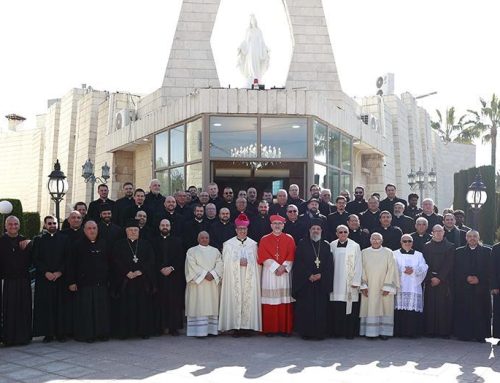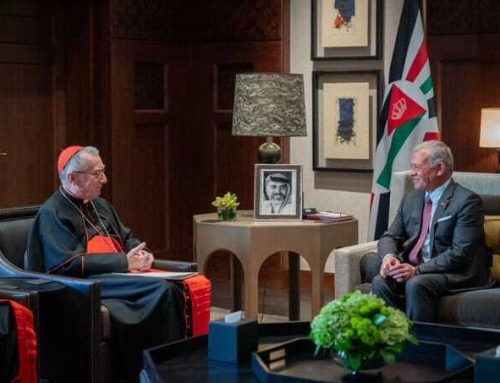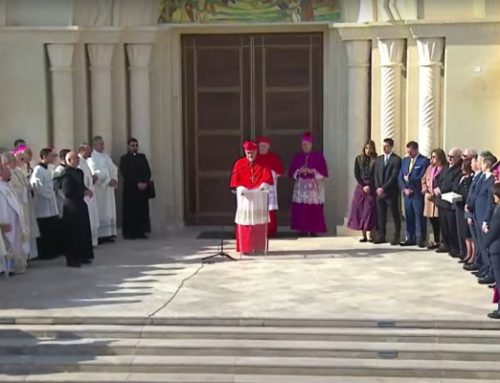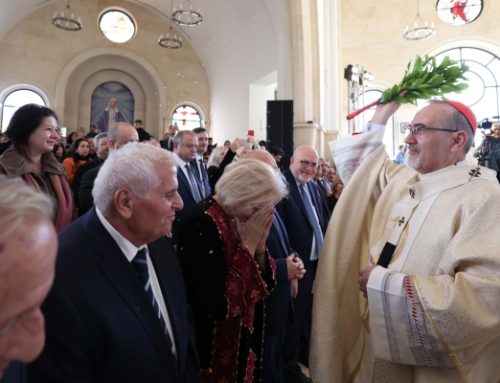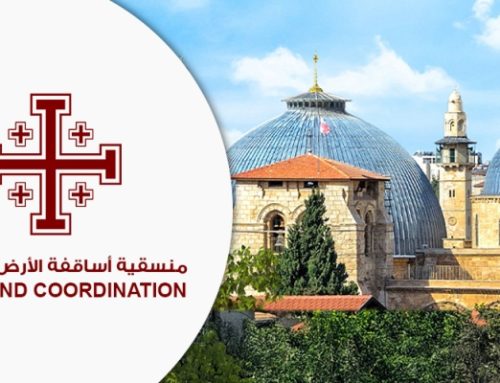Checkpoints and roadblocks are an inexhaustible source for journaling because there are so many of them and each one is different; yet all have the same purpose — to hinder freedom of movement and inconvenience the indigenous people of this land. Last week I literally stumbled through the one at Kalandia, a small town located between Jerusalem and the West Bank town of Ramallah.
Checkpoints and roadblocks are an inexhaustible source for journaling because there are so many of them and each one is different; yet all have the same purpose — to hinder freedom of movement and inconvenience the indigenous people of this land. Last week I literally stumbled through the one at Kalandia, a small town located between Jerusalem and the West Bank town of Ramallah. At Kalandia one must leave a car behind, or exit the shared van on one side of the checkpoint and walk under the watchful eyes of the Israeli Occupation Force perched up on the hill beside the road. The walk is at least a block long until one reaches the area of transportation on the other side of the roadblock. Since the road was recently totally blocked to even foot traffic, one now walks around boulders, metal remains of various objects, through the ruts left behind by tanks or bull-dozers and through a blinding dust as all the vehicles try to turn around and avoid the hundreds of people who continually go through this obstacle course trying to reach their places of work or schools in Jerusalem.
The van ride from Jerusalem had already proved to be interesting. An Arabic woman sat next to me and proceeded to teach me the Arabic words on the plastic sack I was carrying. Then when we arrived in Kalandia, a Palestinian girl about twelve years old took upon herself the responsibility of seeing that I not only got through the maze of traffic to the checkpoint, but also made sure I found the friend who was waiting for me on the other side. I have met some very special people traveling in the shared vans in this country and I have never ceased to be amazed how the Palestinians have welcomed this foreigner into their lives.
Passing through the checkpoint in the afternoon was one matter, but by six o’clock when it was dark and all of us were trying to navigate our way between the many moving cars and vans on each side of the roadblock, having only headlights to help us see, it was also very dangerous. The traffic was churning all around us since the drivers were using the road to go both directions on what was originally a divided street. It’s amazing that there was little horn honking — just warnings to avoid a collision. Yet even in the dark, people who were walking stopped to greet others, and sometimes spent a few moments chatting with those who were walking in the opposite direction. The drivers joked with each other and shared what could be expected at checkpoints farther down the road.
When I told a friend of my experience at the Kalandia checkpoint, she said: “Can you imagine what would happen if this situation would be imposed on those trying to use Jaffa Road in Jerusalem?” We both laughed, as our imaginations presented us with people yelling at each other, getting out of their cars to argue or banging into other cars who were in their way. Kalandia is a dangerous situation with all the foot and van traffic. But the people there, weaving in and around the moving vehicles, were looking out for each other as they put up with having their lives controlled and disrupted by the occupation of their land. The Palestinians moved on undaunted and I was honored to walk beside them.

